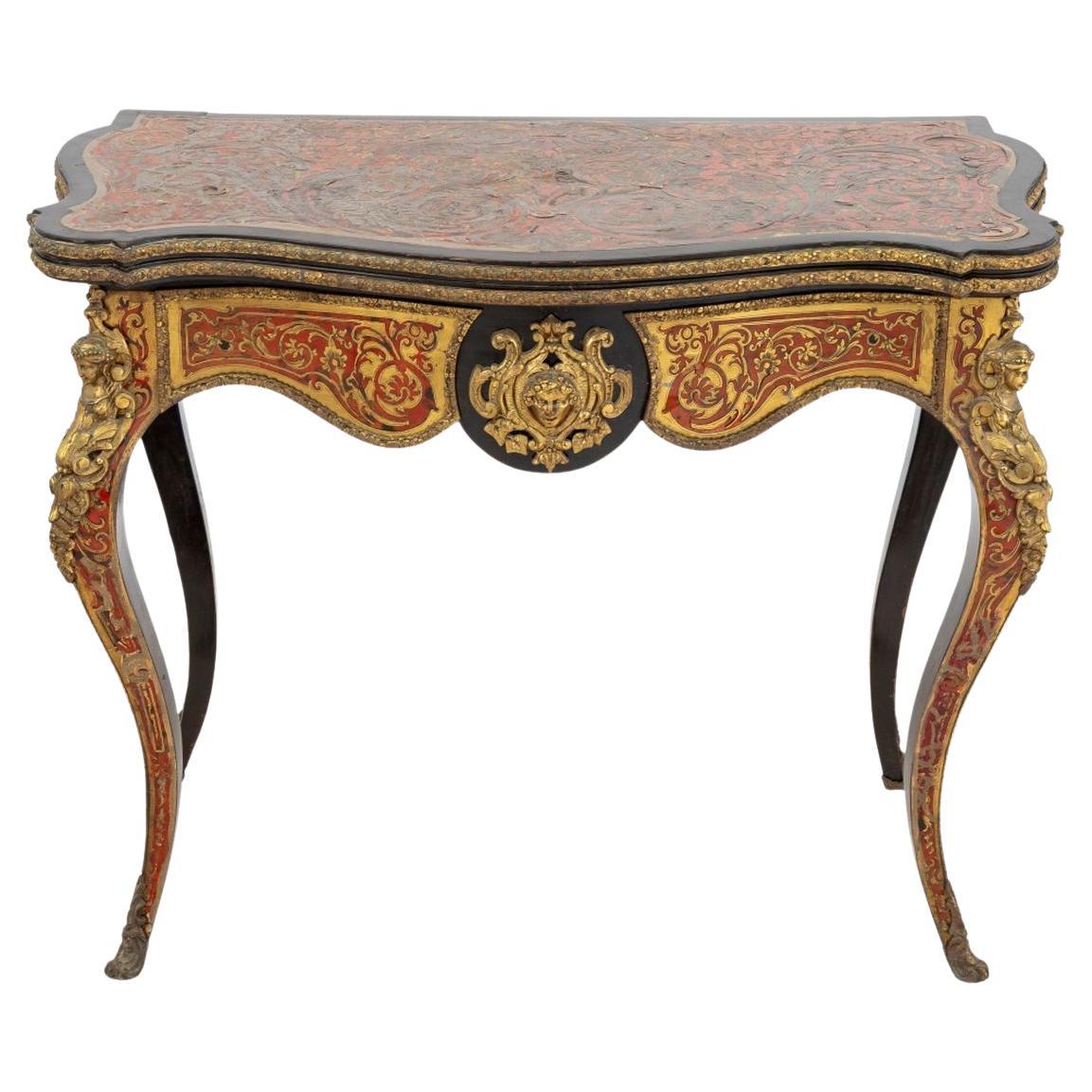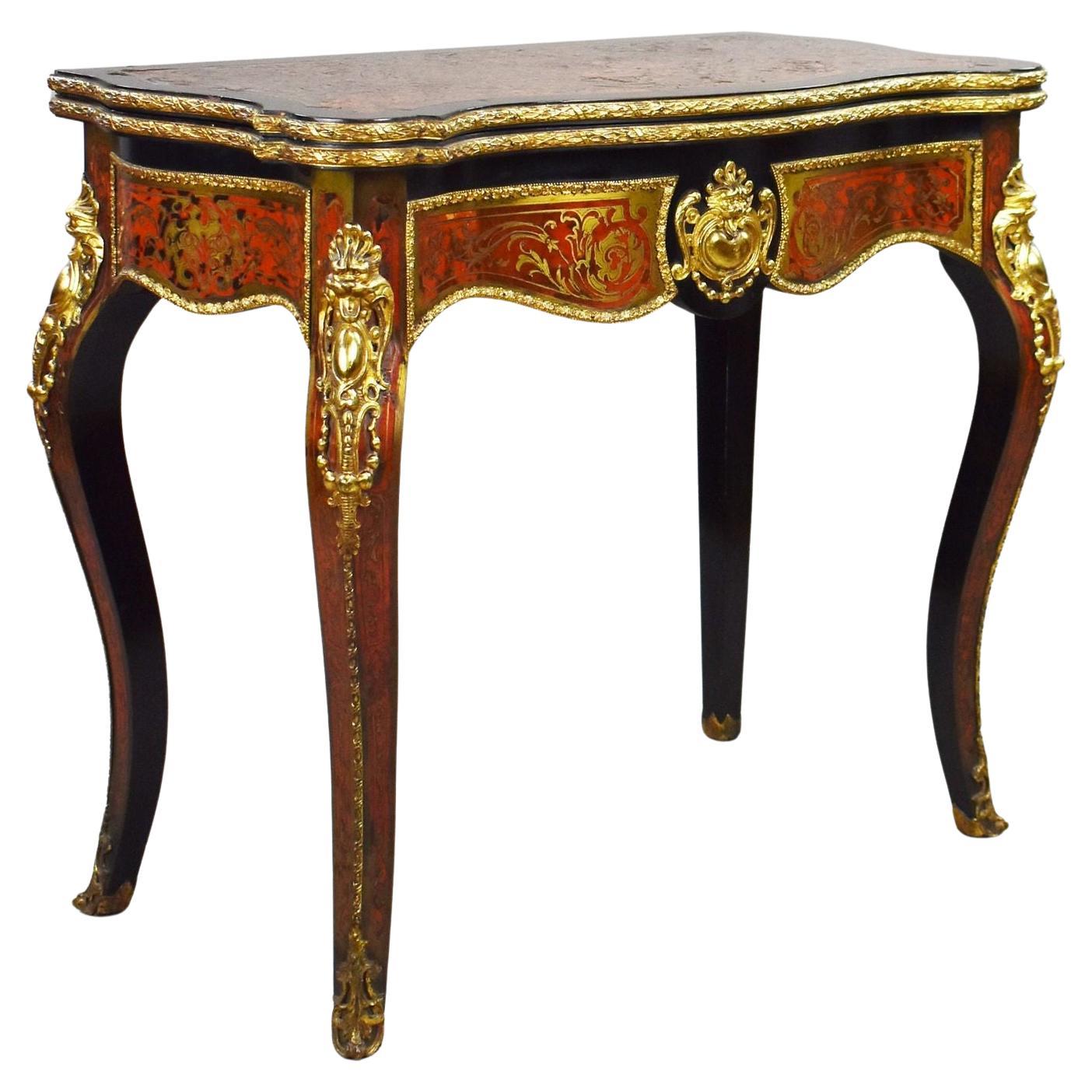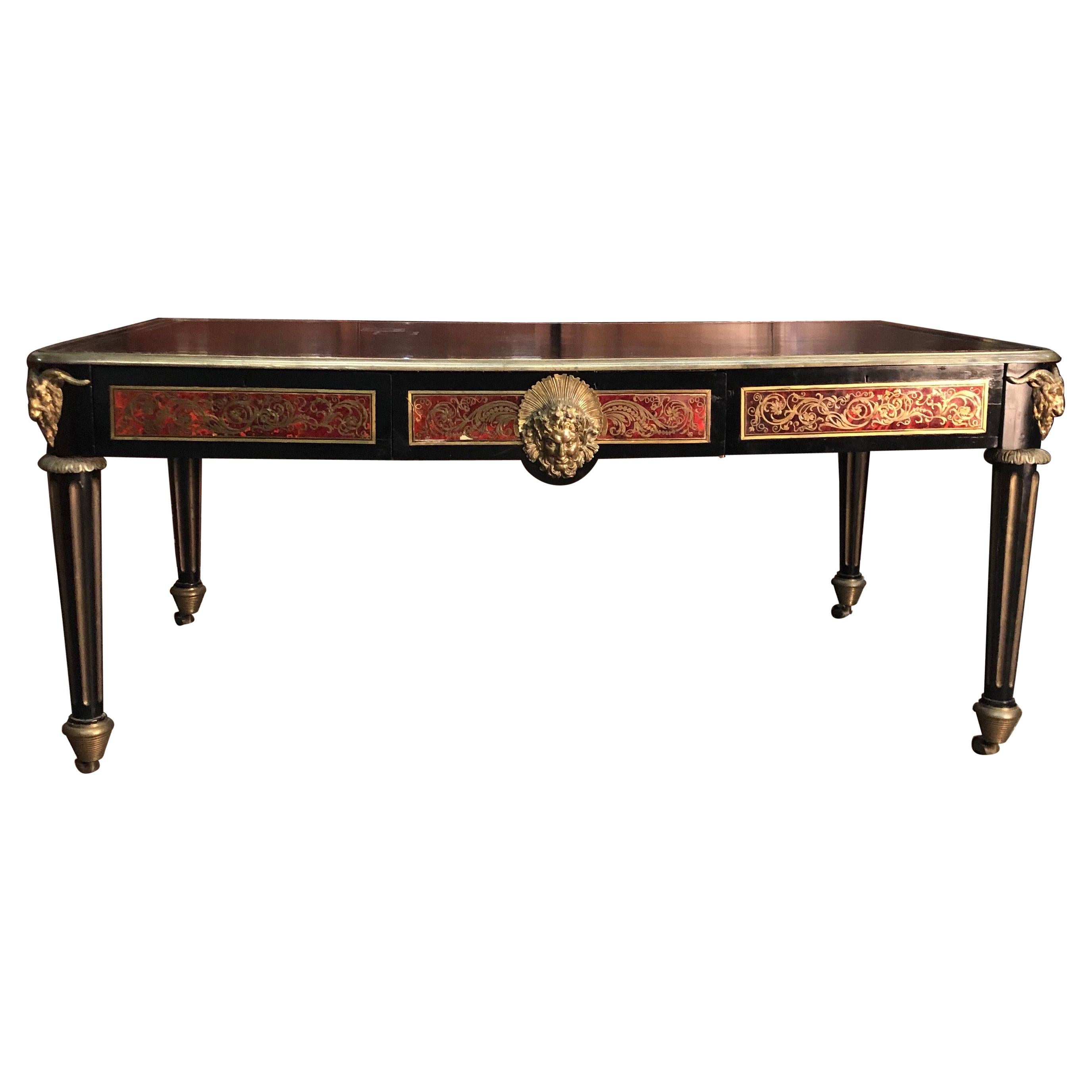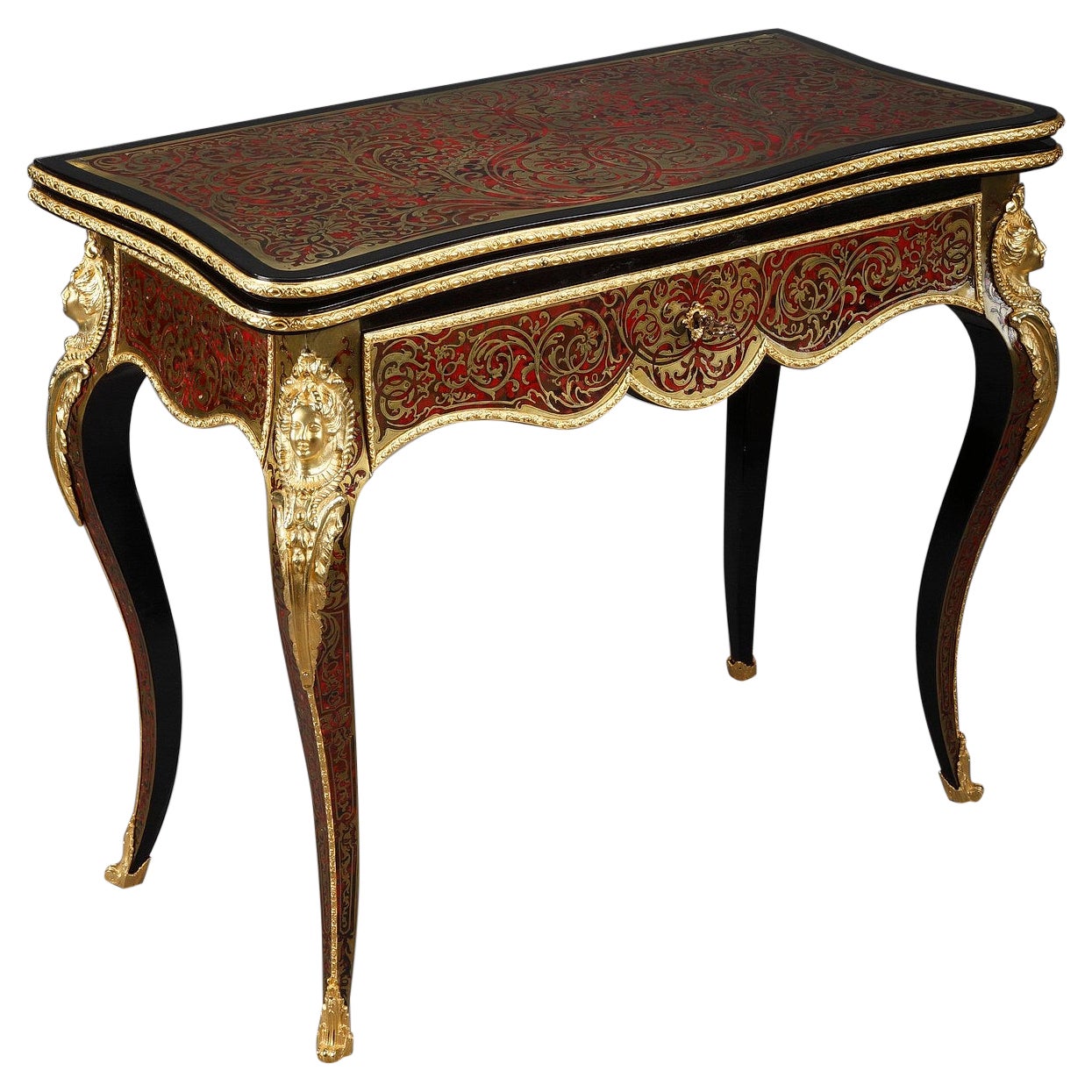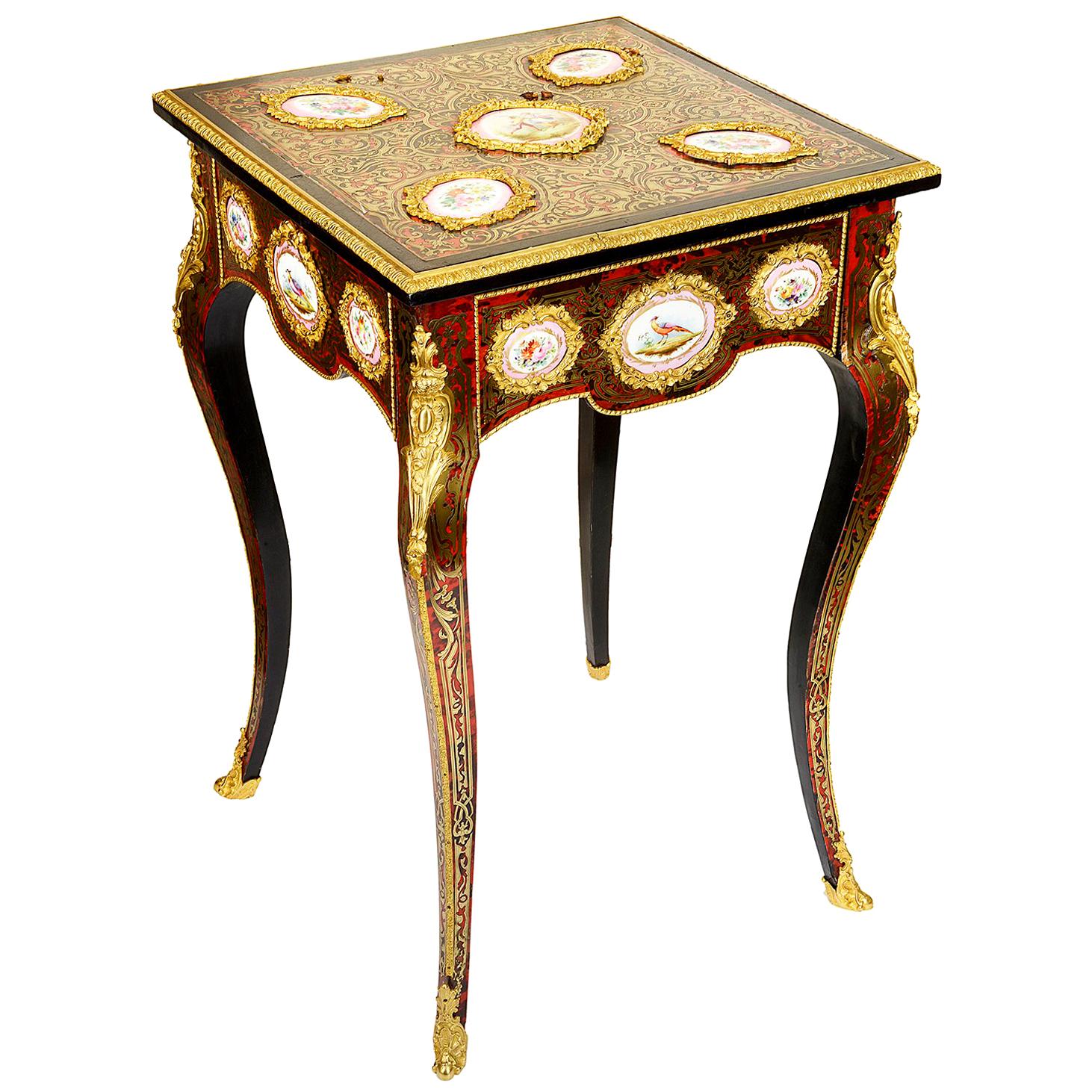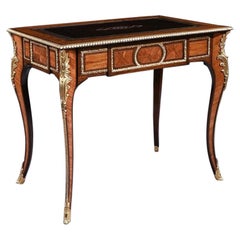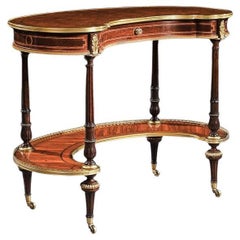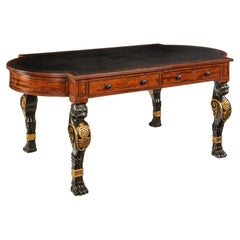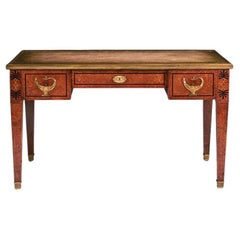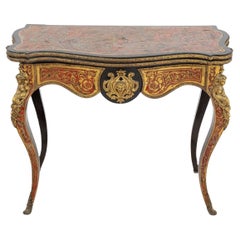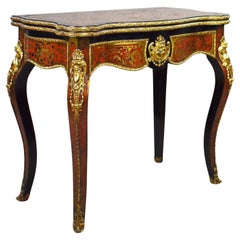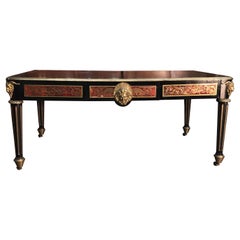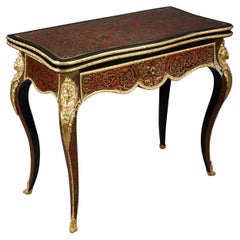Items Similar to An Exceptional George Iv Period Boulle Games Table Attributed to Thomas Parker
Video Loading
Want more images or videos?
Request additional images or videos from the seller
1 of 15
An Exceptional George Iv Period Boulle Games Table Attributed to Thomas Parker
$32,045.41
£24,000
€27,771.80
CA$45,153.39
A$49,718.23
CHF 25,781.08
MX$588,800.50
NOK 327,274.24
SEK 305,874.86
DKK 207,422.46
About the Item
An Exceptional Boulle and Ormolu Mounted Games Table in the French Louis XVI style attributed to Thomas Parker (active 1805-1830)
English Circa 1825
Conceived in the most luxurious taste possible, this fine piece is an example of the Francophile tastes of a small circle of connoisseur collectors closely related to King George IV himself who was the figurehead of this particular artistic movement.
The table is conceived in the French Louis XIV style with shaped cabriole legs and a broadly rectangular top with mother of pearl inlaid chest board, all acting as the background upon which to utilise magnificent ormolu mounts, red ground boulle work and inlaid mother of pearl. The mask mounts on the piece presumably show Bacchus, indicating that these pieces were designed for pleasure and fun-appropriate for gaming tables. The contra partie boulle work is of the highest possible quality-the brasswork inlaid with delicacy and skill and with very little damage or wear and the mother of pearl bright and lustrous. The sabot mounts are also of exquisite quality with their hoof feet lending the table an even more exotic edge.
This table belongs to a select group of pieces of this same design which are all believed to have been supplied by the Parker family of cabinetmakers based in London. A nearly identical table to the present example, but in poor condition and in need of large amounts of restoration, was sold at Sotheby's on the 28th of March 2017 lot 435 realising £28,750 and is believed to have been supplied to the Marquess of Lothian at Newbattle Abbey in Midlothian. Another example in premier partie was in the collection of Butchoff Antiques, London. The attribution of these tables to the Parker family is based upon a series of pieces supplied to King George IV when Prince Regent at Carlton House, some of which are still in the Royal Collection today.
Thomas Parker was established at 19 Air Street, Piccadilly from 1808-17 and then at 22 Warwick Street, Golden Square from 1817-27 and finally at 32 Warwick Street until 1830 after which date the firm closed. The Prince Regent favoured the firm as Parker supplied him with a pair of caskets-on-stands for Carlton House in January 1813 (see P. van Duin, 'Two Pairs of Boulle caskets on stands by Thomas Parker, Furniture History, 1989, pp. 214-217 for the companion pair at Woburn Abbey); a pair of drum tables in April 1814 at a cost of £315 (Carlton House: The Past Glories of George IV's Palace, 1991, p. 108) and a second pair of drum tables in 1817 costing £210. The gilt bronze mounts to the frieze on the present table relate closely to mounts of the pair of drum tables supplied to the Prince Regent. The figural mounts to the top of each leg are also very similar to those mounted on a pair of bureau plat attributed to Parker (one sold Christie's, New York, 17 May 2006, lot 46).
This table is offered in exceptional condition have been through the hands of a museum conservator.
- Creator:Thomas Parker (Maker)
- Dimensions:Height: 28 in (71.12 cm)Width: 32 in (81.28 cm)Depth: 18.5 in (46.99 cm)
- Style:Louis XVI (Of the Period)
- Materials and Techniques:
- Place of Origin:
- Period:
- Date of Manufacture:Circa 1825
- Condition:Wear consistent with age and use.
- Seller Location:Benington, GB
- Reference Number:Seller: 29381stDibs: LU1183235702542
About the Seller
5.0
Gold Seller
Premium sellers maintaining a 4.3+ rating and 24-hour response times
Established in 1969
1stDibs seller since 2015
128 sales on 1stDibs
Typical response time: 2 hours
Associations
LAPADA - The Association of Arts & Antiques DealersThe British Antique Dealers' Association
- ShippingRetrieving quote...Shipping from: Benington, United Kingdom
- Return Policy
More From This Seller
View AllFrench 19th Century Gilt-Bronze Mounted Writing Table of Fine Quality
Located in Benington, Herts
An extremely fine 19th century French Louis XV Revival gilt ormolu mounted Kingwood bureau de dame / writing table.
French, circa 1870.
A very attractive and of the finest qua...
Category
Antique 19th Century French Desks and Writing Tables
Materials
Ormolu
Fine 19th Century Gillows Parquetry and Gilt Bronze Kidney Shaped Table
By Gillows of Lancaster & London
Located in Benington, Herts
An extremely fine gilt bronze mounted parquetry kidney shaped writing table attributed to Gillows of Lancaster.
English Circa 1865
The rosewood lozenge trellis inlaid kidney shape...
Category
Antique 1860s English Desks
Materials
Bronze
Important Regency Mahogany Partners Writing Table in the Manner of George Smith
By George Smith, Charles Norman
Located in Benington, Herts
A highly Important, Regency period mahogany, ebonised and parcel-gilt partners writing table on monopodia legs of exceptional quality and design, in the manner of George Smith, stamped Chas Norman, whom was associated with the work of Gillows.
Labelled ‘Morning Room’.
English, Regency period, circa 1810-20.
Rarely seen, the crescent shaped ended rectangular top, beautifully lined with the original gilt tooled leather writing surface, enclosed by a mahogany cross-banded border and reeded edge.
The frieze, containing four finely chosen fiddle-back mahogany drawers, two pairs to opposing sides, each retaining the original gadrooned carved ebonised knob handles. The perimeters having a finely ebonised cockbead, whilst the drawer liners being executed in mahogany retain the original recessed brass locks, which look to have never been removed. Flanking the drawers are bead-moulded ebonised panels which conform to either end above a reeded mould.
Raised on four boldly designed and imposing, crisply carved, ebonised and parcel-gilt leopard monopodia supports, of wonderful original waxed condition. The Egyptian leopards mask above a bold breast decorated with carved gilt anthemion and guilloche motifs, finishing on a finely detailed carved leg and paw foot.
The condition is excellent, retaining the original hand-dyed and gilt tooled waxed leather writing surface along with original locks, handles and ebonising with gilt-work to the legs. Commissioned for what presumes to be a private collection and due to its condition, being obvious to see, this writing table has been home to an important household. Labelled ‘Morning Library’ to the underside, whilst in this exemplary condition strongly suggests this striking piece of Regency furniture has furnished the library of the said house for the majority of its life.
As can be noted, this is an extremely rare, elegant, early Regency writing table of exceptional colour, which corresponds with designs of the celebrated furniture maker and designer George Smith, workmanship of Gillows, being stamped to the underside Chas Norman four times.
George Smith (1756 - 1826) was one of the most influential furniture designers of the English Regency Period (1811-1830). Smith, who began his pattern-book in 1804, wrote of ‘the great taste and elegance’ of this design.
In 1808 he published his influential and definitive text on Regency interior Design titled ‘ A Collection of Designs for Household Furniture and Interior Decoration’ and classed himself as ‘Upholder Extraordinary to His Royal Excellency the Prince of Wales’…The Prince Regent.
Smith was inspired in his designs from his earlier career as an Egyptologist, producing drawings incorporating motifs of Leopards heads and paws, Lions, sphinx’s, anthemia, and griffons amongst others.
Charles Heathcote Tatham (1772-1842) published ‘Etchings, Representing the Best Examples of Ancient Ornamental Architecture; Drawn from the Originals in Rome, and Other Parts of Italy During the Years 1794, 1795, and 1796’, in which he illustrated an antique tripod table...
Category
Antique Early 19th Century British Regency Desks and Writing Tables
Materials
Mahogany, Giltwood
Fine 19th Century French Neoclassical Style Amboyna and Gilt Bronze Mounted Writ
Located in Benington, Herts
An extremely fine and unusual French Amboyan and gilt bronze bureau plat - writing table inspired by the Neoclassical designs.
French circa 1880-1900.
A superb amboyna writing ...
Category
Antique 19th Century French Neoclassical Desks and Writing Tables
Materials
Bronze
An Extremely Fine Rosewood and Brass Inlaid Writing Table Attributed To Gillows
By Gillows of Lancaster & London
Located in Benington, Herts
An Extremely Fine and rare Rosewood and Brass Inlaid Writing Table Attributed to the Oxford Street Workshop of Gillows.
English c.1820-1830
With a raised back comprising a thre...
Category
Antique Early 19th Century English Desks and Writing Tables
Materials
Brass
Late 19th Century French Gilt Bronze and Marble Gueridon
Located in Benington, Herts
A Fine Quality Late 19th/Early 20th Century Gilt Bronze and Marble Two Tier French Gueridon with Neoclassical Detailing
French Circa 1900
Conceived in the late Louis XVI style, thi...
Category
20th Century French Louis XVI Side Tables
Materials
Marble
You May Also Like
Louis XV Style Boulle Card Table
Located in Astoria, NY
Louis XV Style Boulle Gilt Metal Mounted Faux Tortoiseshell and Brass Inlay Card Table, late 19th century, the serpentine shaped fold-over enclosing a green baize lined interior, con...
Category
Antique Late 19th Century French Louis XV Game Tables
Materials
Metal, Brass
Louis XV Style Boulle Marquetry Card Table by Edwards & Roberts
By Edwards & Roberts
Located in Chelmsford, Essex
Louis XV Style Boulle Marquetry Card Table by Edwards & Roberts
Stock No.: S27-1074
A fine late 19th-century Louis XV style card table by the distinguished London cabinetmakers Edwar...
Category
Antique 19th Century English Game Tables
Materials
Ebony
French Boulle Bureau Plat / Library Table, Late 18th Century
By André-Charles Boulle
Located in Charleston, SC
Exceptional French Boulle bureau plat has the English feel of a library table with the four rams head mounted bronze fluted legs terminating in a br...
Category
Antique Late 18th Century French Louis XIV Desks and Writing Tables
Materials
Brass, Bronze, Ormolu
Console and Game Table in Boulle Marquetry
By André-Charles Boulle
Located in Paris, FR
Console in Boulle marquetry with brass background with scrolls, arabesques and flowers, convertible into a game table. The console is richly decorated with gilded bronzes. The top is...
Category
Antique 1870s French Louis XV Console Tables
Materials
Brass, Bronze
19th Century Boulle Side Table
By André-Charles Boulle
Located in Brighton, Sussex
A very good quality 19th century French Boulle inlaid side table, having gilded ormolu mounts, Sevres style porcelain plaques with classical romantic scenes, flowers and birds. The f...
Category
Antique 19th Century French Louis XVI Center Tables
Materials
Brass, Ormolu
19th Century Napoleon III Boulle Style Console and Game Table
Located in Germantown, MD
This 19th century serpentine front fold top console and games table captures the essence of André Charles Boulle’s work perfectly; with classical designs in brass inlay to the top, ...
Category
Antique Mid-19th Century French Napoleon III Card Tables and Tea Tables
Materials
Brass, Bronze
$10,150 Sale Price
30% Off
More Ways To Browse
Antique Figurehead
Antique Figureheads
Antique Casket Stand
Woburn Abbey
Tessellated Game Table
Reversible Game Table
Used Poker Tables
Vintage Backgammon Board Game
Antique Checkerboard Table
Inlaid Chess Table
Lacquer Backgammon
Pool Table Cues
Chess Board Leather
Chess Table Art Deco
Game Table French Chess
Louis Xvi Tric Trac Table
Mahjong Table
Baker Flip Top Table
